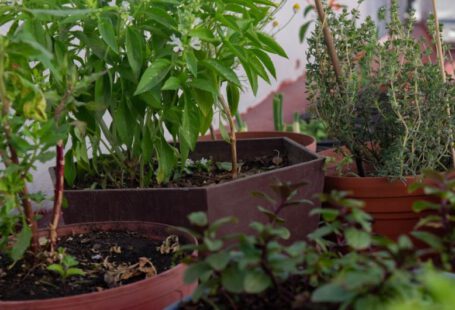Rooftop gardening has gained popularity in recent years as people seek to maximize urban spaces for greenery and food production. While rooftop gardens offer numerous benefits such as improved air quality, reduced urban heat island effect, and access to fresh produce, they come with their own set of challenges. Overcoming these challenges is crucial to the success of rooftop gardening projects. In this article, we will explore the common obstacles faced by rooftop gardeners and provide practical solutions to help overcome them.
**Limited Weight Capacity**
One of the primary challenges of rooftop gardening is the limited weight capacity of rooftops. Most rooftops are not designed to support the heavy load of soil, water, and plants required for a garden. Exceeding the weight limit can lead to structural damage and safety hazards. To overcome this challenge, it is essential to consult with a structural engineer to assess the rooftop’s weight-bearing capacity and determine the maximum load it can support. Using lightweight materials such as specialized soil mixes, containers, and raised beds can help reduce the overall weight of the garden.
**Limited Access to Water**
Another challenge of rooftop gardening is the limited access to water. Rooftops tend to dry out faster than ground-level gardens due to exposure to sun and wind. This can result in plants becoming dehydrated and stressed, affecting their growth and productivity. To address this challenge, installing an efficient irrigation system is essential. Drip irrigation systems, soaker hoses, or self-watering containers can help ensure that plants receive an adequate and consistent water supply. Additionally, choosing drought-tolerant plants and incorporating water-saving techniques such as mulching can help reduce water consumption.
**Extreme Weather Conditions**
Rooftop gardens are exposed to extreme weather conditions such as strong winds, intense sunlight, and temperature fluctuations. These environmental factors can impact plant health and survival, making it challenging to maintain a thriving garden. To mitigate the effects of extreme weather, consider installing windbreaks such as trellises, fences, or plant barriers to protect plants from strong winds. Providing shade structures such as umbrellas, shade cloth, or pergolas can help reduce sun exposure and prevent plants from overheating. Monitoring weather forecasts and adjusting garden maintenance practices accordingly can also help minimize the impact of extreme weather on rooftop gardens.
**Limited Space and Growing Conditions**
Space constraints and limited growing conditions are common challenges faced by rooftop gardeners. Rooftops often have limited space, sunlight exposure, and soil depth, making it challenging to grow a wide variety of plants. To make the most of limited space, prioritize vertical gardening techniques such as trellising, hanging baskets, and vertical planters to maximize growing area. Choose plants that are well-suited to rooftop conditions, such as succulents, herbs, and vegetables that thrive in containers. Incorporating raised beds or container gardening allows for better control over soil quality and drainage, ensuring optimal growing conditions for plants.
**Pest and Disease Management**
Pests and diseases can pose a significant threat to rooftop gardens, as urban environments can harbor a variety of pests that can damage plants and reduce yields. Implementing integrated pest management practices such as regular monitoring, maintaining plant health, and using natural pest control methods can help prevent pest infestations. Proper sanitation, crop rotation, and companion planting are effective strategies for reducing the risk of diseases in rooftop gardens. Additionally, selecting disease-resistant plant varieties and practicing good garden hygiene can help minimize the impact of pests and diseases on rooftop crops.
**Conclusion**
In conclusion, while rooftop gardening presents unique challenges, with careful planning and strategic solutions, these obstacles can be overcome to create a productive and sustainable garden space. By addressing issues such as limited weight capacity, access to water, extreme weather conditions, space constraints, and pest management, rooftop gardeners can cultivate thriving gardens that enhance urban environments and promote green living. With creativity, resourcefulness, and a willingness to adapt, rooftop gardening can be a rewarding endeavor that yields bountiful harvests and contributes to a greener, healthier world.





